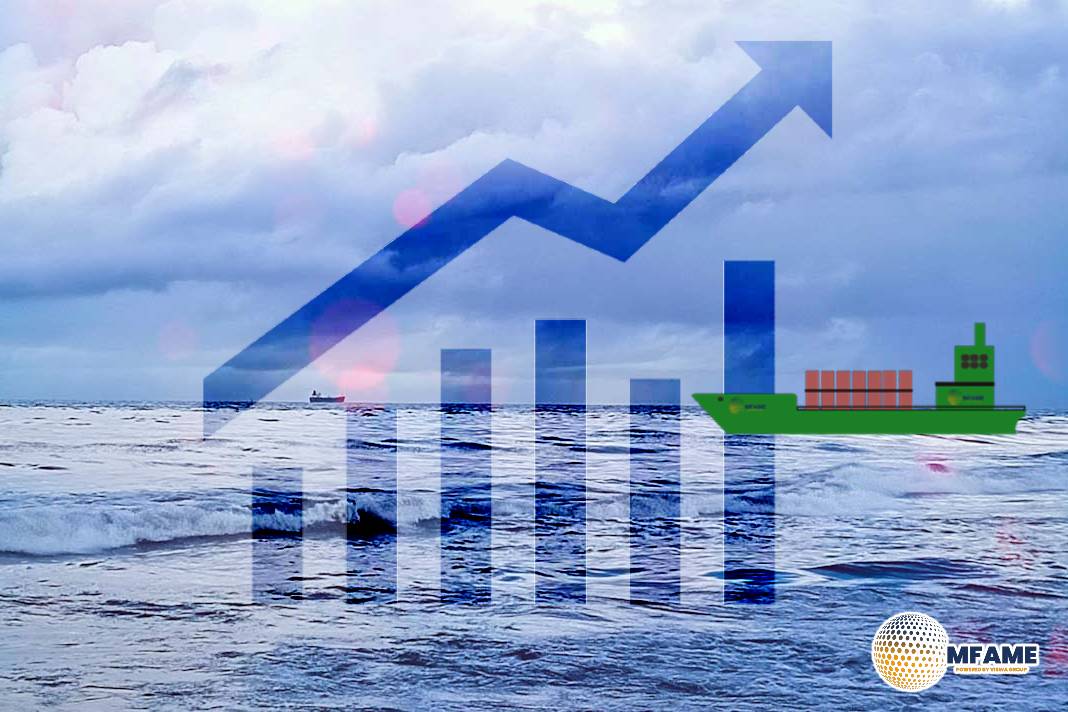 This week’s chart illustrates the increase in the monthly volume of Ukrainian grain shipments during the first half of this year (left chart), following Russia’s withdrawal from the Black Sea Grain Initiative in the summer of 2023. Despite the heightened security risks and logistical challenges, Ukraine has managed to significantly boost its grain exports through alternative routes and increased efficiency.
This week’s chart illustrates the increase in the monthly volume of Ukrainian grain shipments during the first half of this year (left chart), following Russia’s withdrawal from the Black Sea Grain Initiative in the summer of 2023. Despite the heightened security risks and logistical challenges, Ukraine has managed to significantly boost its grain exports through alternative routes and increased efficiency.
The data reveal that Spain and China have become the top destinations for Ukrainian grain, each accounting for 20% of the total exports, followed by Egypt with a 10% share (right chart). This diversification of export destinations highlights Ukraine’s efforts to maintain its agricultural trade flows amidst geopolitical disruptions.
In the grain segment, recent data illustrates a robust uptrend in the monthly volume of Ukrainian grain shipments during the first half of this year, surpassing figures from the same period last year. This growth trend presents promising trading opportunities, particularly benefiting the Handysize vessel size segment.
Capesize vessel freight rates for shipments from Brazil to North China have dipped below $26 per ton, though they still reflect a 34% increase compared to the same week last year.
Panamax vessel freight rates from the Continent to the Far East held levels around $40 per ton, 25% higher than those recorded a year ago.
Supramax vessel freight rates on the Indo-ECI route held steady around $10 per ton, reflecting similar sentiment to the previous week. These rates remain 35% higher compared to the same period last year.
Handysize freight rates for the NOPAC Far East route have remained consistent over the past nine weeks, holding steady at approximately $36 per ton. This marks a notable 36% increase compared to rates observed one year ago.
In the third week of July, the Cape and Panamax SE Africa markets, which had been on a declining trend in previous weeks, showed a reversal with an upward movement. Similar increases were also observed in the smaller vessel size segments.
Capesize SE Africa: The number of ballast ships has rose nearly 120, up approximately 30 from the low observed nearly three weeks ago.
Panamax SE Africa: The number of ballast ships has risen to over 170, marking an increase of approximately 50 vessels compared to the low point observed in week 25.
Supramax SE Asia: The count of ballast ships has now exceeded the annual average of 103 for the first time since the end of week 21, reaching a peak similar to the level observed at the end of week 11.
Handysize NOPAC: Following a decline noted in week 25, the number of ballast vessels has shown an upward trend since the end of the previous week, now surpassing the annual average of 80. Today, the count of ballasters has risen to 86, marking an increase of 6 from the previous week.
In the third week of July, the outlook for dry tonne days indicated a weakening trend. Both the large vessel size segment and the Handysize experienced signs of slower growth. In contrast, the Supramax segment maintained a more robust outlook.
Capesize
Recent estimates of tonne-day growth have shown a decline from the peak observed in week 25; nevertheless, growth remains markedly higher than the low point recorded at the end of week 21.
Panamax
The renewed increase observed in the second week of July was reversed in the third week, contradicting expectations of a positive trend in demand. It remains uncertain whether the weekly percentage growth will stabilize in the remaining days of the month.
Supramax
The growth rate held its upward trend observed over the past four weeks, showing improvement from the low point recorded at the end of week 21.
Handysize
The upward trend in the Handysize vessel segment reversed course at the end of the second week of the month; nonetheless, it still stands significantly above the low point observed in week 18.
Did you Subscribe to our daily newsletter?
It’s Free! Click here to Subscribe
Source: Breakwave














![[Watch] Crazy Power Needed to Move World’s Largest Containerships](https://mfame.guru/wp-content/uploads/2023/11/mfame-tanker-100x70.jpg)
